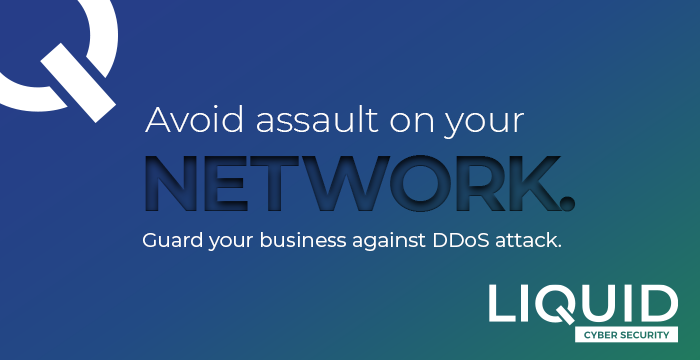By Sylvester Mboya, Chief Business Officer-Eastern Africa Region at Liquid Intelligent Technologies
Our digital cosmos is continuously evolving from technology, process, and people standpoints. As corporations adapt to more innovative technologies and ways of working, the scope of challenges and issues related to Cyber Security magnify simultaneously.
Latest digital developments, coupled with the side-effects of the global pandemic, as well as increased regulatory and legislative requirements, have pushed the need for Cyber Security to be prioritized not just by big corporations but also by small/micro businesses and individuals alike. Cyber Security protects the confidentiality, integrity, and availability of information that can be critical to the survival of any business or even personal finances and welfare.
Cyber threats, vulnerabilities, and risks
Businesses must have a clear understanding of the threats, their vulnerabilities and information security risks to better protect their data and choose Cyber Security safeguards and measures according to their landscape and needs. Understanding the landscape and needs will allow an organization to anticipate attacks to a certain extent and deploy solutions and services to protect against these perils. These could range from compromise of critical organizational infrastructure and data breaches to phishing attacks on individuals.
While referring to cyber threats, some of the most common types are Malware, Phishing, Website Defacing, Man in the Middle (MiTM) attacks, Denial of Service attacks, to name a few. Cyber attackers can misuse an individual’s credentials or exploit vulnerabilities within a company’s IT environment to steal information or gain access to personal financial accounts, among other potentially damaging actions, which is why Cyber Security professionals are vital for keeping private data protected.
It is estimated that about 94% of malware is delivered via email, whereas phishing attacks account for more than 80% of reported security incidents and that a total of US $20,000 is lost every minute due to phishing attacks.
A vulnerability could mean a certain disadvantage, e.g., lack of adequate safeguards; or weakness the organization have, e.g., unpatched software; can potentially be exploited by a hacker. A house without any security devices such as cameras, alarms, or even security guards is at a higher risk of being broken into than those that have even one of those physical security measures in place. Throw in a broken door or a window to the already vulnerable house, and chances of an attack increase manifold. Similarly, compromised, or outdated Cyber Security software or weak passwords make organizations more vulnerable to hackers, thereby increasing the chances of getting hacked. The Common Vulnerabilities and Exploits (CVE) database lists more than 11,000 exploitable vulnerabilities in commonly used systems and software.
An information security risk is calculated by considering the relevant threats to an organization, how vulnerable the organization is given the current safeguards in place to mitigate against these threats, which gives a likelihood rating that the threat may materialize. This likelihood rating must then be considered along with relevant confidentiality, integrity and availability impact ratings of information assets which may be affected should the threat materializes. These ratings combined (added or multiplied depending on the methodology used), gives an information security rating. The highest rated information security risks need to be managed by one of the following methods: mitigation (reduce); transfer, e.g., taking out insurance; avoid, e.g., doing away with a system/service that is the risk; or lastly accept the risk since it falls within the organization’s risk appetite. It is not as straightforward as it sounds, purely because multiple layers of complexities are associated with threats, vulnerabilities, and information security risks. For instance, a multi- layered approach is required just to defend against malware attacks, e.g., safeguards needed for email, Web, endpoints, servers, Groupware, removable media, etc. There are also different types of attacks which must be covered, e.g., known malware can be addressed by basic malware signature protection, but variants thereof require behavior-based protection, while unknown or 0-day attacks requires sandboxing or similar. In some cases, organizations don’t realize that their defenses are compromised. In layman’s terms, a thief lying in wait for the perfect moment to strike to ensure maximum damage to the homeowner.
Signs, symptoms, and solutions for cyber-attacks
The most obvious signs to detect if a software/phone/laptop/device is infected is to look for any discrepancies, odd/unusual behavior displayed by the device’s software. If compromised by ransomware, it is often easy to detect it as the hackers usually make their presence known to initiate negotiations.
Phishing emails, which look harmless on the surface, usually cost a hefty penalty when not addressed promptly. Some other examples of a system under attack are frequent crashes or pop-up windows. Unusually slow computers or frequent requests for password changes should be treated with caution since it could be indicative of malicious activities in the background.
The sophistication of the attacks will influence the possibility of employees ever knowing that their devices were used to infiltrate their employer’s network. Hence, it is vital to ensure that businesses rely on the expertise of Cyber Security professionals who are appropriately trained and have the right tools to detect any malicious activities on devices, networks, or the Cloud.
Prevention is better than cure
Due to cyber-attacks’ multi-faceted and complex nature, organizations should avoid approaching Cyber Security with broad-brush stroke solutions. Always take care of the basics and ensure that you have a defense-in-depth strategy with multiple layers of protection.
The elements included in the article are not new, however, with an increasing number of businesses adopting the hybrid work culture, the playground for cybercriminals just broadened overnight.
It is time to pay attention to the threats, vulnerabilities and information security risks that are relevant to your organizational landscape. The reputation of businesses at risk and losing trust will always negatively impact the growth cycle of any organization.






